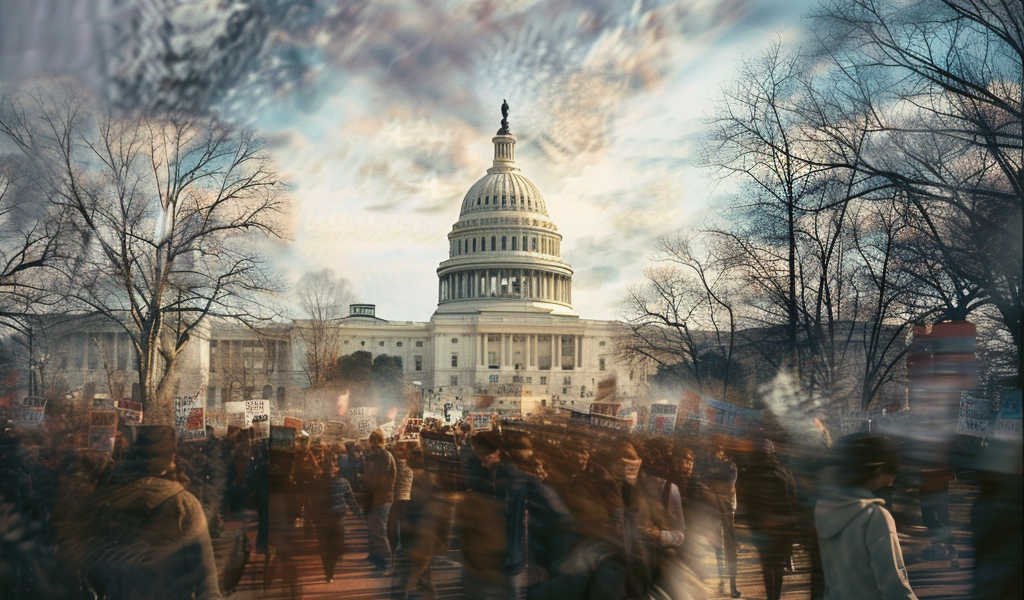In recent discussions surrounding the integrity of elections and the dynamics of political protests, significant attention has been directed toward the events leading up to the January 6 Capitol riot. Former President Donald Trump has repeatedly asserted that if he were to lose the 2020 election, it would be due to widespread election fraud. Despite these claims, there was a notable absence of proactive measures taken by Trump or his Republican allies to safeguard against the alleged fraud.
One pivotal moment in this narrative involves Women for America First (WFAF), which initially planned a protest for Inauguration Day on January 20. However, at Trump’s suggestion, the event was rescheduled to January 6, coinciding with the congressional certification of the presidential election results. This change raises critical questions about the intent behind the timing. Why was the date altered, and what was the objective of aligning the protest with the certification process?
Moreover, the rally’s conclusion was strategically timed to coincide with the vote certification. This alignment prompts further inquiry: what was the intended outcome of this synchronization? The shift in the event’s date was not the only alteration made; the National Park Service (NPS) had inquired about the potential for a march following the demonstration. Until January 4, the WFAF had indicated there would be no march. Yet, shortly thereafter, they requested to include a march to the Capitol in their permit.
Text messages reveal that plans for this additional march had been in the works for over a week. The decision to withhold this information from the NPS, local law enforcement, and the FBI raises significant concerns. Why would the organizers choose to keep such vital details hidden, leaving authorities with only a day to prepare for an expanded protest?
These actions, combined with a lack of efforts to prevent alleged fraud, the rescheduling of the protest, and the last-minute changes to the event’s scope, contribute to a troubling narrative. Additionally, the pressure exerted on election officials to alter votes, the existence of fake electors, and baseless lawsuits further complicate the situation. The inaction of Trump during the insurrection, as he reportedly watched the events unfold for hours without intervening, adds another layer to this complex issue. Ultimately, these circumstances prompt a critical examination of who was genuinely attempting to undermine the electoral process.
In a separate but equally important topic, the recent realignment of high school football leagues in Ventura County has sparked concerns regarding its environmental impact. The California Interscholastic Federation (CIF) has proposed a significant shift in the league structure for the 2024 season, which critics argue will exacerbate the carbon footprint associated with student travel.
The new alignment will require teams to travel greater distances, effectively doubling the travel time for many schools. This increase in travel not only raises logistical challenges but also contributes to higher fuel consumption by buses, which is particularly alarming in the context of ongoing discussions about climate change and environmental sustainability.
While the intention behind the realignment is to achieve greater parity among teams, the execution of this plan has been met with skepticism. Critics argue that a more geographically focused approach could have alleviated the need for such extensive travel. For instance, an East County high school is now required to travel to Santa Barbara, a journey that could have been avoided with a more thoughtful realignment strategy.
This decision has left many questioning the judgment of athletic directors and principals who approved the changes. The implications of increased travel on the environment are significant, and the need for responsible growth strategies in school sports is more pressing than ever. As communities grapple with the challenges of climate change, the decisions made today will have lasting effects on future generations.
In the context of urban development, Simi Valley has experienced considerable changes over the past two decades. While growth can be beneficial for local businesses, it also presents challenges that must be addressed. The city is at a crossroads, where strategic planning and sustainable practices are essential to ensure that growth does not come at the expense of the community’s well-being.
As Simi Valley continues to evolve, the need for comprehensive growth strategies becomes increasingly apparent. Balancing economic development with environmental stewardship will be crucial in shaping the city’s future. Stakeholders must work collaboratively to implement solutions that support both business interests and the quality of life for residents.
In summary, the discussions surrounding the integrity of the electoral process and the environmental impact of local sports realignment highlight the complex interplay of political actions and community decisions. As these issues unfold, it is imperative for citizens to remain informed and engaged, advocating for transparency, sustainability, and responsible governance in their communities.





